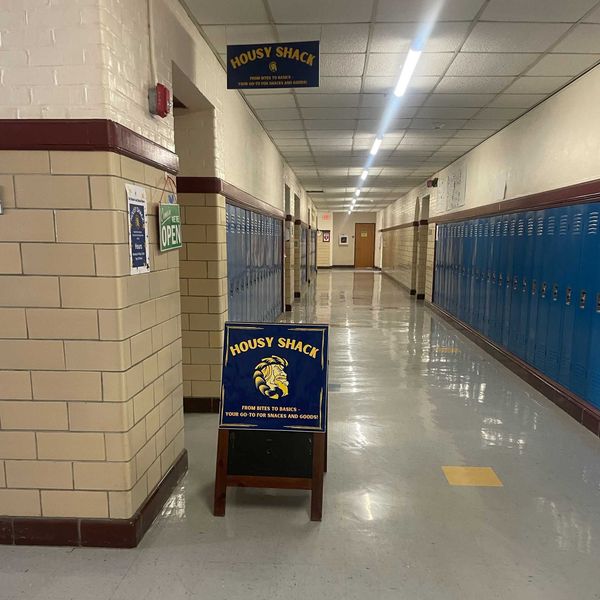Millerton director is an Oscar nominee

Arlo Washington in a film still from the Oscar-nominated short "The Barber of Little Rock."
Story Syndicate

Arlo Washington in a film still from the Oscar-nominated short "The Barber of Little Rock."
John Hoffman, a Millerton resident, has been nominated for his film “The Barber of Little Rock,” which he co-directed with Christine Turner, in the Best Documentary Short Film category at the upcoming 96th Academy Awards.
Distributed by The New Yorker and produced by Story Syndicate Production in association with 59th & Prairie, Better World Projects, and Peralta Pictures, “The Barber of Little Rock” explores the efforts of Arkansas local hero Arlo Washington, who opened a barbershop at 19 years old and, with a mission to close the racial inequality gap in his community, went on to found the Washington Barber College as well as People Trust Community Federal Credit Union. Washington’s goal is aiding his primarily Black neighborhood, which has historically been underserved by more prominent banking institutions.
Hoffman appeared at The Moviehouse in Millerton for a special screening of the short film Friday, Feb. 23, which played along with the four competing nominees: “Nai Nai & Wài Pó” (Grandma & Grandma), a humorous portrait by Sean Wang of his maternal and paternal Taiwanese grandmothers who share one home in Los Angeles, California; “The ABCs of Book Banning,” which features interviews with Florida school children discussing the books that have been removed from their libraries; “The Island Inbetween” which documents life on Kinman, an island governed by Taiwan and located across a bay from Mainland China; and “The Last Repair Shop,” about the lives of four dedicated craftspeople who repair the musical instruments for public school children in Los Angeles.
“The Barber of Little Rock” received the Jenni Berebitsky Legacy Award at the 2023 Indy Shorts International Film Festival and was nominated at the eighth annual Critics Choice Documentary Awards.
At the talk, Hoffman explained that one of the most potent experiences in filming the documentary was seeing firsthand the financial and racial divide in Little Rock, illustrated by Interstate 630, which acts as a barrier between white affluence and Black poverty in the city. The interstate resulted from the signing of the Federal Highway Act by President Dwight D. Eisenhower, then the most extensive public works program in America. In the documentary, Scott Green calls the fallout from the I-630 “not a wealth gap, but a wealth chasm.” Green is the nephew of Ernest Green, one of the Little Rock Nine, the first African American students permitted to enroll at Little Rock Central High School.
People Trust, the only Black-owned Community Development Financial Institution in Arkansas, is attempting to bridge that chasm by supporting the emergence of minority-owned businesses in the community, including helping graduates of Washington’s barber college forge a path toward establishing their own shops and salons and providing emergency grants for Little Rock residents experiencing the strains of houselessness or searching for a new start following incarceration. The average People Trust loan is $5,000 for businesses and $1,000 for individuals.
As Washington says in the documentary short, “Once [Little Rock residents] can put funds here, and deposits, then we’re not going to put money outside of this community, we’re going to put money back into the community.”
“Once this catches on, it becomes a threat,” Green replies. “Because it can inspire others to think that they can become free. This is about being free.”
The 96th Oscars will be held Sunday, March 10, at the Dolby Theatre in Los Angeles and will be televised live on ABC.
“The Barber of Little Rock” is available to watch on www.newyorker.com and The New Yorker’s YouTube channel.

The Community Closet at HVRHS is open for students to take clothes for any reason during the school day.
What started with one unexpected donation of clothes has grown into a quietly impactful resource for all students at HVRHS: the Community Closet. Now located in a spacious area above the cafeteria, the closet offers free clothing to any student for any reason.
The idea began a few years ago when a community member reached out to the former superintendent wondering if anyone at the school could benefit from used clothing that would otherwise go to waste. The superintendent then got in contact with Rachel Novak, the school social worker. “Once I had all those bags of clothes in my room, I was like, ‘I should put this in a space,’” Novak said. Her simple idea eventually became a full-sized closet accessible to all students.
From the beginning, Novak envisioned the closet as an inclusive space. “It’s open to anybody, it’s not just based on economic needs,” she said. Sustainability also plays a role. “Thinking about the environment, some students like to thrift and just get clothes that way,” Novak said.
After the initial donation, contributions continued to grow. “I reached out to our staff members and faculty,” Novak said. The most consistent donations come from the faculty at HVRHS and a few community members who learned about the closet. Finding teenage-appropriate clothes has been a challenge. “I get a lot of donations that are nice, but I don’t think teenagers would want to wear them,” Novak said.
Another ongoing obstacle has been awareness. Many students don’t know the closet exists at all. “That’s been the hard part,” Novak said. “Getting it out to the wider community of the school.” Novak is looking for students and staff to spread the word. “It helps because our school nurse knows and other faculty members,” she said. “When they know a student needs something, they just bring them up.”
Looking ahead, she hopes to promote the space more actively. “When we come back from this break, I do plan to … get fliers and all that up and going,” Novak said. There may even be an upcoming expansion — she has discussed the possibility of turning part of the area into a food pantry. “That would be more of a need-based system for students,” she said. “But right now, promoting it is where I’m at.”
The Community Closet is well-stocked currently. “Just because of the amount of clothes I have, I’m not accepting any more donations until I clear some stuff out,” Novak said. She is still willing to make room for more fashionable, teen-friendly items donated by students. “That way I’ll have more teenager approved clothes.”
Above all, she wants students to know that no one is limited to using the space. “Sometimes there’s a stigma around it … like, ‘I don’t need help. I don’t want to take away from anybody else that may need it,’” Novak said. Due to the amount of clothes, students should feel welcome to use the closet for any reason. Some students even grab items last minute for sports and activities. “It’s important for kids to know it’s for everyone.”
Whether a student wants to thrift clothes sustainably, forgot to pack clothes for an after-school practice, or is in need of a new outfit, the Community Closet is a resource for all.
Sophomore Eliana Lang enjoys her Housy Shack cookie.
Now in its second year, the Housy Shack is a hit among students. The special education department-run store that sells warm cookies, drinks and other snacks to students and teachers draws people to a room in the back hallway every time it’s open.
The smell of warm cookies welcomes visitors to the store with snacks, drinks and even Housy merchandise for sale. The cookies are definitely the favorite, sometimes lines go out the door to get one before they sell out.
The cookies are so popular that the store had to increase prices from 50 cents to a dollar and implement a four cookie per person maximum. The Shack sells about 40-100 cookies per day and has about 20-60 HVRHS customers visiting per day.
Julie Browning and Heather Strid, two of the HVRHS faculty members that help run the Shack, said their goal was to create real-world job experiences as well as real-world shopping experiences for students at HVRHS. “Learning the skills to work in the world can be taught in a classroom, but the lessons are more meaningful and valuable when they are applied in real work situations, which is what we create through the school store,” Browning said.
The original purpose for the store seems to be working, as several students are learning important skills. Students said the store taught them skills like counting money, checking inventory and cleanliness along with social skills and customer service that could help in the professional world after high school.

As the store quickly became a hit, organizers were faced with the challenge of finding funding. “When we started planning to start the school store two years ago we needed money to buy equipment, supplies and food to start it up but were not sure how to get it,” Browning said. “Mrs. Strid came up with the idea of applying for a grant from the 21st Century Fund to help us get started and they were so generous.” That grant has been crucial to the success and growth of the school store.
Not only does the Housy Shack benefit the special education department, students said it fosters a sense of community throughout the school. “School store cookies are my favorite thing ever. They brighten up my day,” said Eliana Lang, a sophomore at HVRHS. Dayana, one of the student staffers at the Housy Shack, said her favorite part of working in the school store is when students come in to make purchases. She enjoys talking to them and ringing up their orders on the cash register. The Housy Shack brings people together and offers the opportunity for students to connect with each other.
As the school year continues, the members of the school store look forward to expanding their inventory by creating and selling a variety of Housy merchandise — t-shirts, sweatshirts, water bottles, and more. “I have had several students put in requests for certain hats, key chains, etc. … so there will be more of that to come,” Browning said. Last school year, profits were all invested back into the school store. “This year we are hoping to make more of a profit and will look to use the money that we make for field trips, outings as well as opportunities to donate and give back to the community,” Browning said. They also would like to use the school store to fundraise for other causes. “Right now we are collecting donations for The Little Guild Animal Shelter, so if anyone has pet supplies they would like to donate please drop them off in exchange for a cookie,” Browning said.